
Fundamentals
The term “Afro-Ethnic Hair” denotes the vast and wondrous spectrum of hair textures originating from individuals of African descent. This includes the tightly coiled strands often described as kinky, the springy curls, and the looser waves found across Black and mixed-race communities. It encompasses a unique biological makeup, fundamentally different from other hair types, influencing its appearance and care requirements. This inherent distinctiveness calls for a nuanced understanding, one that begins with appreciating its elemental form before exploring its profound cultural resonance.
The core biological distinction of Afro-Ethnic Hair lies in the shape of its hair follicle. Instead of the round or oval follicles that produce straight or wavy hair, Afro-Ethnic Hair emerges from a more elliptical or ribbon-like follicle. This unique shape dictates the curvature of the hair strand as it grows, causing it to coil and bend upon itself.
Furthermore, the cross-sectional shape of the hair shaft itself is often flattened and irregular, contributing to its characteristic spirals and zig-zags. These structural differences affect how light reflects off the hair, often giving it a natural matte appearance, and influence its intrinsic need for specific care.
Afro-Ethnic Hair encompasses the diverse, coiled, curly, and wavy textures inherent to individuals of African and mixed African descent, stemming from unique biological structures that necessitate specialized, heritage-informed care.
Ancestral wisdom consistently underscored the importance of moisture and gentle handling for these hair textures, lessons now validated by contemporary science. The tightly wound nature of Afro-Ethnic Hair means that the natural oils produced by the scalp, known as sebum, struggle to travel down the hair shaft effectively. This anatomical reality contributes to the hair’s propensity for dryness.
Moreover, the points where the hair strand bends are inherently weaker, making it more vulnerable to breakage if handled without tenderness. Recognizing these foundational aspects allows for a deep appreciation of traditional care practices.

Understanding Basic Characteristics
Understanding the foundational characteristics of Afro-Ethnic Hair allows us to approach its care with reverence for its natural state. Each strand, a testament to ancient biology, carries an ancestral blueprint.
- Curl Pattern ❉ The varied shapes, from tight coils to broader S-patterns, dictate how the hair clumps and retains moisture.
- Density ❉ The number of hair strands per square inch on the scalp, which can range from sparse to very dense, impacts overall volume and styling options.
- Porosity ❉ The hair’s ability to absorb and retain moisture. Afro-Ethnic Hair often exhibits a raised cuticle, leading to higher porosity and a quicker release of hydration unless properly sealed.
- Strength ❉ Despite its voluminous appearance, Afro-Ethnic Hair can be fragile at its curl points. Its unique structure makes it less resistant to mechanical extension than straight hair.
These fundamental aspects highlight why generalized hair care approaches frequently fail these unique textures. A genuine understanding begins with acknowledging the inherent needs of the hair itself, a wisdom passed down through generations.

Intermediate
Moving beyond its elemental biology, the Afro-Ethnic Hair gains deeper meaning through its intricate connection to cultural heritage and lived experience. The designation “Afro-Ethnic Hair” is not merely a scientific classification; it embodies generations of identity, resilience, and profound artistry across the African diaspora. Its appearance, care, and styling have long communicated unspoken stories of belonging, status, and spirit.
Historical narratives affirm hair’s central role within African societies long before any colonial gaze sought to redefine it. In pre-colonial Africa, hair served as a sophisticated visual language. Hairstyles often communicated a person’s age, marital status, tribal affiliation, wealth, and social standing.
The creation of these elaborate styles was a communal activity, a time for sharing stories, wisdom, and nurturing bonds within families and communities. The meticulous processes of washing, oiling, braiding, twisting, and adorning hair were not simple acts of grooming; they were sacred rituals, fostering connections to the divine and honoring ancestral practices.
The nomenclature “Afro-Ethnic Hair” resonates beyond genetics, serving as a repository of historical memory and a powerful instrument of identity for diasporic communities worldwide.
The transatlantic slave trade profoundly disrupted these ancestral practices, yet the spirit of hair artistry persisted as a silent act of resistance. Enslaved Africans, stripped of their material possessions and often subjected to forced head-shaving, found ways to preserve fragments of their hair traditions. Hidden under headwraps, rudimentary braids and twists endured, becoming a subtle symbol of cultural continuity and defiance in the face of dehumanization. This historical reality underscores the deep significance of Afro-Ethnic Hair not just as a physical trait, but as a living archive of endurance.

Cultural Symbolism and Social Language
Across diverse African cultures, hair was meticulously sculpted to reflect a complex social lexicon. The specific patterns and adornments often conveyed intimate details about the wearer’s life.
- Social Status ❉ Certain intricate styles were reserved for royalty, elders, or those with particular spiritual roles.
- Marital Status ❉ A change in hairstyle could signal a woman’s readiness for marriage or her transition into married life.
- Age and Life Stages ❉ Children, adolescents, and mature adults often wore distinct styles marking their progression through life.
- Spiritual Connection ❉ Hair, being the highest point of the body, was often considered a conduit to the spiritual realm, a belief held by the Yoruba people, for example.
- Tribal Identity ❉ Unique styles allowed members of specific ethnic groups to recognize each other even across distances.
The loss of these practices during forced migration was devastating. However, the legacy of hair as a profound marker of identity survived, re-emerging in new forms within diasporic communities.
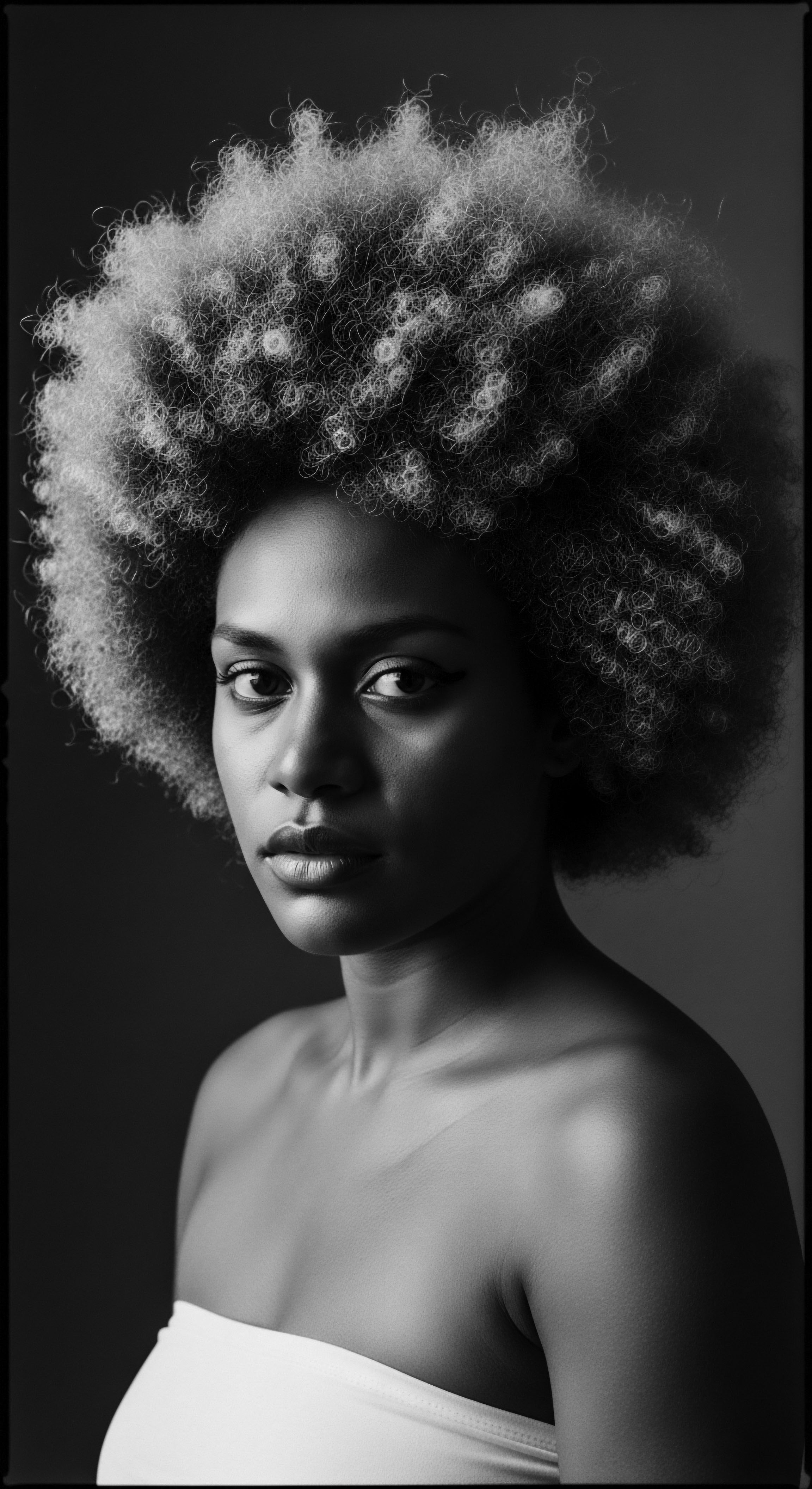
The Continuum of Care ❉ Ancestral Echoes in Modern Practice
Many contemporary hair care practices for Afro-Ethnic Hair are, in essence, echoes of ancestral wisdom, now supported by modern scientific understanding. The emphasis on moisturizing, protective styling, and gentle manipulation found in today’s regimens directly mirrors techniques employed for centuries.
Consider the profound continuity between ancient remedies and current hair wellness. Our ancestors relied on locally sourced botanicals and natural lipids to condition their hair, protecting it from environmental elements. These ingredients were chosen not just for their availability, but for their observed effectiveness.
| Traditional Practice Natural Oils and Butters ❉ Utilized plant extracts such as shea butter, palm oil, and coconut oil. |
| Contemporary Link to Afro-Ethnic Hair Moisture Retention ❉ Scientific analyses affirm these oils’ ability to seal the hair cuticle, minimizing water loss from highly porous Afro-Ethnic strands. |
| Traditional Practice Protective Hairstyles ❉ Braiding, twisting, and coiling hair to minimize daily manipulation and exposure. |
| Contemporary Link to Afro-Ethnic Hair Reduced Breakage ❉ Modern research confirms that these styles decrease mechanical stress and environmental damage, preserving length and health of Afro-Ethnic Hair. |
| Traditional Practice Herbal Rinses ❉ Infusions from plants used for cleansing and conditioning the scalp and hair. |
| Contemporary Link to Afro-Ethnic Hair Scalp Health ❉ Many traditional herbs contain anti-inflammatory and antimicrobial properties, supporting a healthy environment for Afro-Ethnic Hair growth, a concept now explored in botanical hair science. |
| Traditional Practice Communal Grooming ❉ Hair care as a shared social ritual, often multi-generational. |
| Contemporary Link to Afro-Ethnic Hair Wellness and Bonding ❉ While modern contexts vary, the practice speaks to the psychological benefits of shared care, reinforcing self-esteem and cultural connection related to Afro-Ethnic Hair. |
| Traditional Practice These enduring methods highlight a timeless wisdom, demonstrating that ancestral practices continue to inform and enrich our understanding of optimal Afro-Ethnic Hair wellness. |
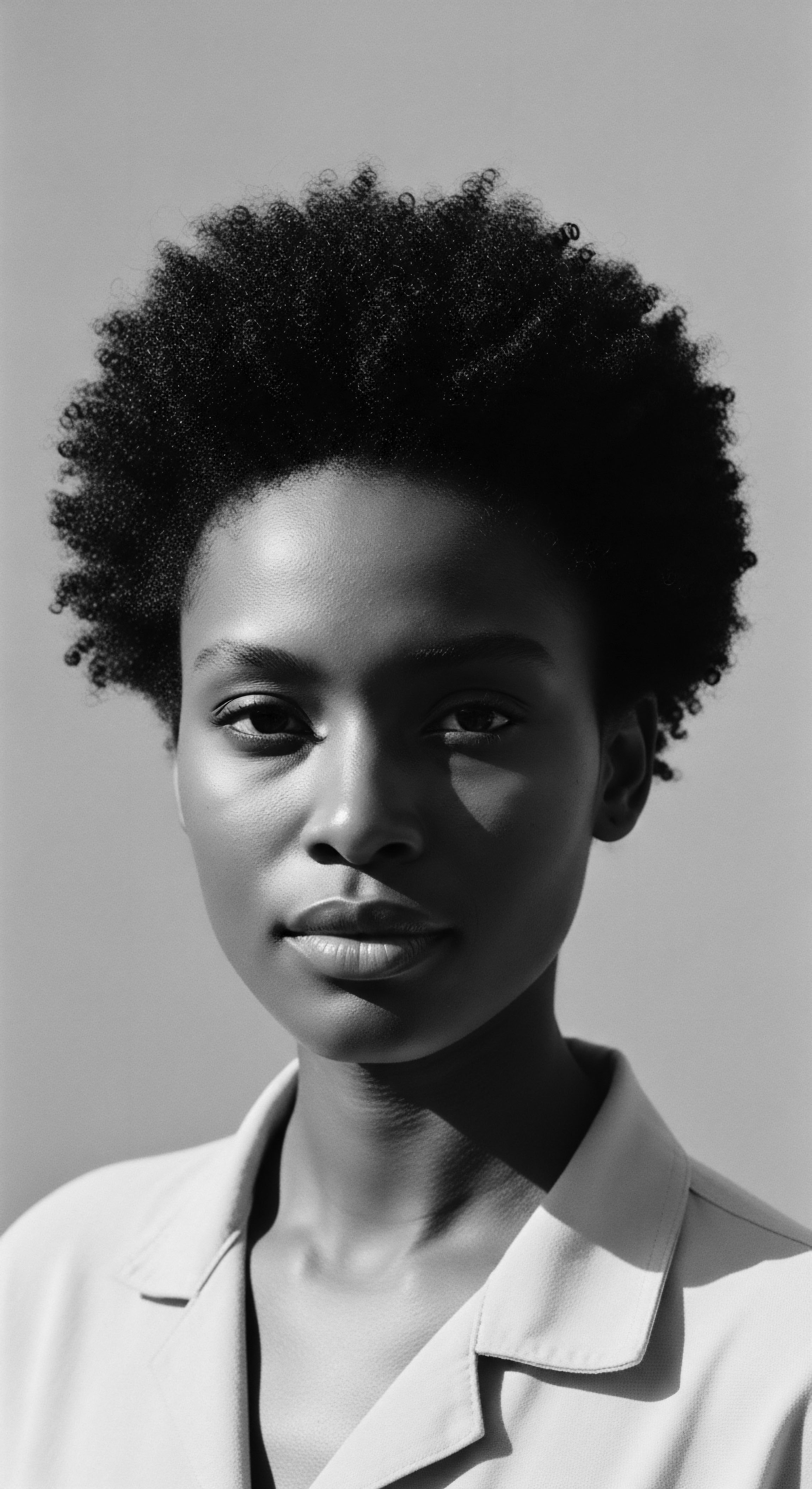
Academic
The academic investigation into Afro-Ethnic Hair transcends a mere phenotypic description; it delves into a complex interplay of genetic inheritance, structural morphology, socio-historical forces, and the profound psychological landscape of identity. This exploration positions Afro-Ethnic Hair not simply as a biological phenomenon, but as a dynamic cultural artifact and a site of persistent socio-political contestation and resilience. The term itself functions as an analytical lens, offering a deeper comprehension of how hair, particularly within Black and mixed-race populations, has been shaped by and continues to shape historical narratives, communal bonds, and individual self-perception.
At its core, the scientific explanation of Afro-Ethnic Hair begins with a microscopic examination of the hair follicle and shaft. Research indicates that the follicles producing Afro-Ethnic Hair are typically asymmetrical, possessing an elliptical or oval cross-section. This distinct follicular shape causes the hair fiber to grow in a curvilinear, often helical, path. The unique curvature contributes to regions of structural weakness along the hair shaft where the strand bends sharply, making it inherently susceptible to breakage under mechanical stress.
Additionally, the cuticle layers of Afro-Ethnic Hair, which typically protect the inner cortex, may be less tightly packed or more numerous, influencing porosity and moisture retention dynamics. This architectural predisposition towards dryness and fragility underscores the scientific rationale behind the traditional emphasis on emollients and protective styling observed across African and diasporic cultures for millennia.
Afro-Ethnic Hair is a profound confluence of genetics, cultural tradition, and historical experience, demanding an interdisciplinary academic approach to fully grasp its enduring meaning and significance.
Sociologically and anthropologically, Afro-Ethnic Hair has served as a powerful signifier, a visible marker of ethnicity, status, and belief systems in pre-colonial African societies. Prior to the devastating disruptions of the transatlantic slave trade, hairstyles acted as a sophisticated semiotic system, conveying intricate social information. For example, among the Wolof people of Senegal, specific braided patterns could indicate a person’s age, marital status, or even their geographic origin. The very act of hair styling often served as a communal ritual, reinforcing social cohesion and transmitting cultural knowledge across generations.
This deep-seated meaning, interwoven with daily life, stands in stark contrast to the dehumanizing practices inflicted upon enslaved Africans, where head-shaving sought to strip them of their identity and cultural memory. Yet, even in the crucible of enslavement, coded messages and cultural continuity were maintained through rudimentary hair practices. For instance, some enslaved West African women braided rice seeds into their hair before being forcibly transported to the Americas, a powerful act of cultural preservation that facilitated the cultivation of vital crops in new lands.
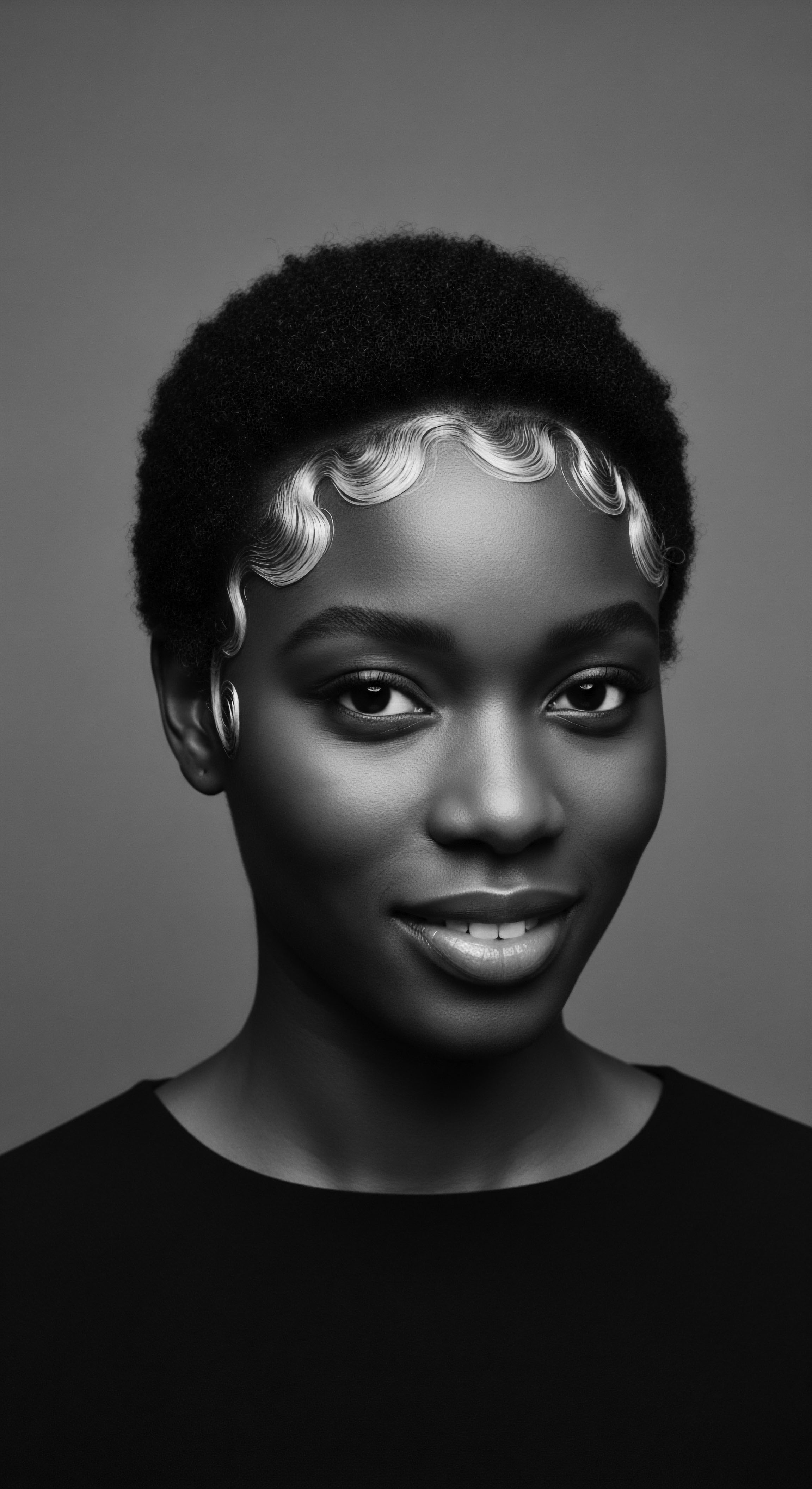
Historical Economic Significance ❉ The Kongo Kingdom and Hair Adornment
While much has been written about the social and spiritual roles of hair, a less commonly explored dimension relates to its tangible economic and political significance in specific pre-colonial African contexts. Consider the historical practices within the Kongo Kingdom , a powerful state that flourished in Central Africa from the 14th to the 19th centuries, encompassing parts of modern-day Angola, the Democratic Republic of Congo, and the Republic of Congo. Here, hair was not solely a personal adornment; it was deeply intertwined with systems of wealth, power, and exchange.
Within the Kongo Kingdom, specialized artisans known as banganga (plural of nganga, ritual specialists or healers) and master weavers often held privileged positions, their skills valued in the creation of not only textiles but also elaborate hair adornments. These adornments, crafted from precious materials, were forms of tangible wealth and status symbols. For example, the intricate coiffures of Kongo nobility, particularly the ntumba hairstyle of the Luba-Kasai people (a related cultural group whose practices offer insight into broader Central African traditions) were not merely aesthetic. They were often enhanced with shells, copper, beads, and even woven plant fibers that were themselves commodities exchanged within regional trade networks.
The acquisition of these materials, and the mastery required to integrate them into complex hairstyles, represented significant economic activity. The very tools used by hair artisans – specialized combs, picks, and styling instruments – were sometimes fashioned from carved ivory or polished wood, reflecting their own value and the prestige of the craft. This underscores that Afro-Ethnic Hair, through its styling and adornment, directly participated in the economic landscape of these societies, signifying accumulated wealth and skilled labor. The preservation and mastery of these elaborate techniques became a form of cultural capital, passed down through generations, directly contributing to the economic and social fabric of the kingdom.
| Aspect of Hair Practice Skilled Artisans (e.g. Banganga) |
| Economic and Social Implication Their expertise in crafting elaborate hairstyles and integrating precious materials (shells, copper, beads) into Afro-Ethnic Hair constituted a valuable trade, often commanding high fees or reciprocal services. |
| Aspect of Hair Practice Material Resources |
| Economic and Social Implication The raw materials for hair adornment (e.g. copper from mines, cowrie shells, specialized fibers) were procured through trade routes, directly contributing to regional economies and signifying trade relationships. |
| Aspect of Hair Practice Hairstyles as Wealth Markers |
| Economic and Social Implication Complex, well-maintained coiffures with valuable adornments served as a visible display of social status and accumulated wealth, reflecting a family’s standing within the community. |
| Aspect of Hair Practice Intergenerational Knowledge Transfer |
| Economic and Social Implication The passing down of intricate braiding and styling techniques from elders to youth ensured the continuity of a specialized craft that held both cultural and economic value within the Kongo Kingdom. |
| Aspect of Hair Practice The intricate relationship between Afro-Ethnic Hair aesthetics and the economic dynamics of the Kongo Kingdom exemplifies how hair served as a medium of both personal and collective prosperity. |
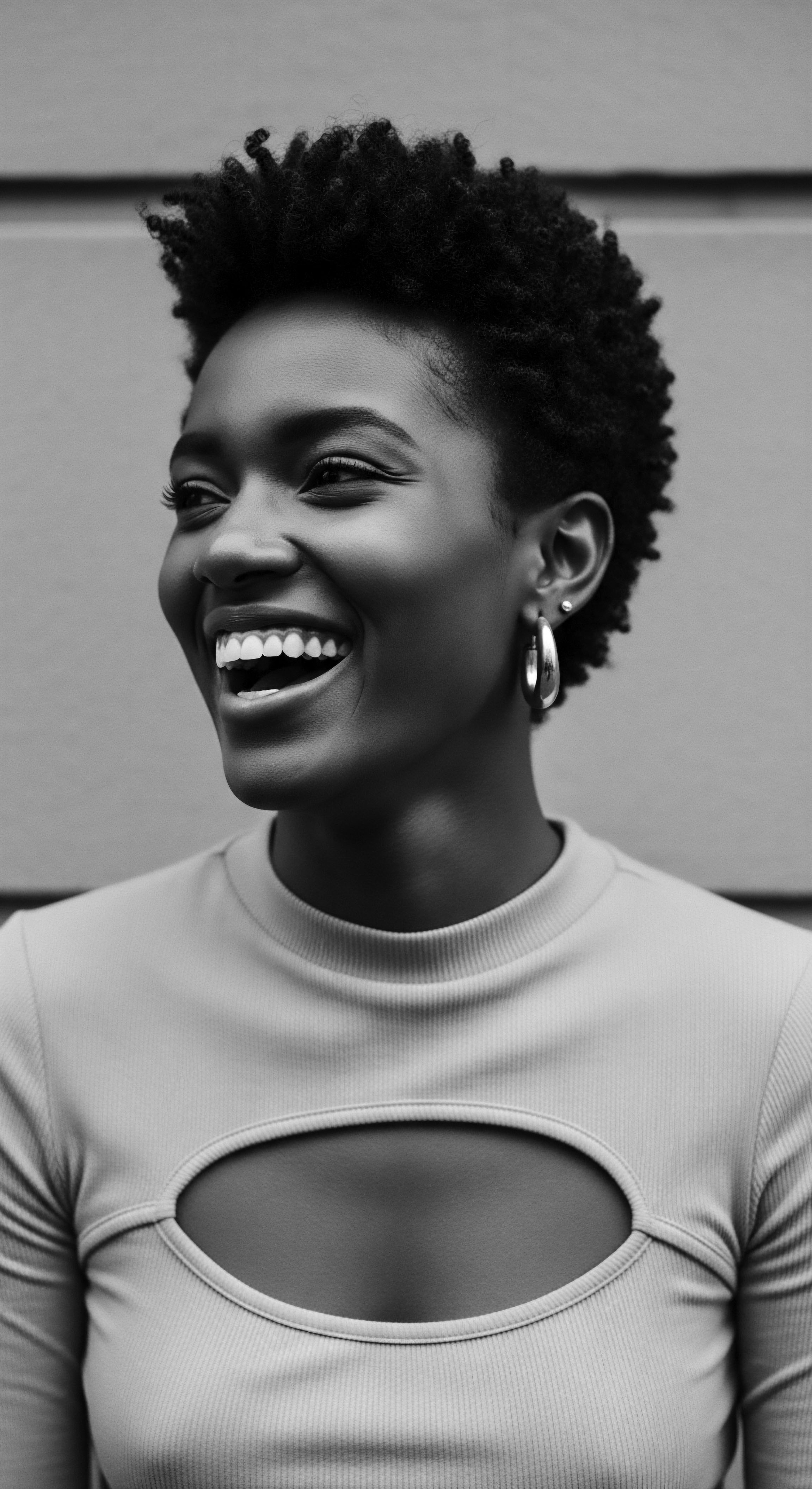
The Psychological and Sociopolitical Dimensions
The political journey of Afro-Ethnic Hair has been a persistent one, spanning centuries. Post-emancipation periods saw intense pressure on Black individuals to conform to Eurocentric beauty standards, often necessitating the use of harsh chemical relaxers and hot combs to alter natural textures. This assimilation was often linked to perceived social acceptance and economic opportunity, creating a deeply ingrained association between hair texture and societal validation. The psychological toll of this pressure has been considerable, manifesting in issues of self-esteem and identity discord within Black communities.
The latter half of the 20th century witnessed a powerful reclamation with the Natural Hair Movement, particularly during the Civil Rights era. The Afro, a style that unapologetically celebrated the natural volume and coil of Afro-Ethnic Hair, became a potent symbol of Black pride, defiance, and self-acceptance. This movement asserted the inherent beauty and cultural validity of natural hair, challenging prevailing norms and marking a significant shift in the discourse surrounding Black identity.
Today, while progress has been made, individuals with Afro-Ethnic Hair continue to face discrimination in professional and educational settings, leading to legislative efforts like the CROWN Act, which prohibits race-based hair discrimination. This ongoing struggle highlights that hair remains a political battleground, reflecting broader societal biases.
Understanding the long-term consequences of historical hair biases is important for fostering holistic hair wellness. Decades of chemical straightening have been associated with various scalp and hair health issues, including traction alopecia and central centrifugal cicatricial alopecia (CCCA), which are disproportionately observed in individuals of African descent. These physiological impacts underscore the necessity of moving towards practices that honor the natural integrity of Afro-Ethnic Hair, aligning modern scientific understanding with ancestral wisdom that prioritized gentle, protective methods. The journey towards hair wellness for Black and mixed-race individuals often becomes a path toward self-acceptance and cultural affirmation, bridging personal well-being with a rich collective history.
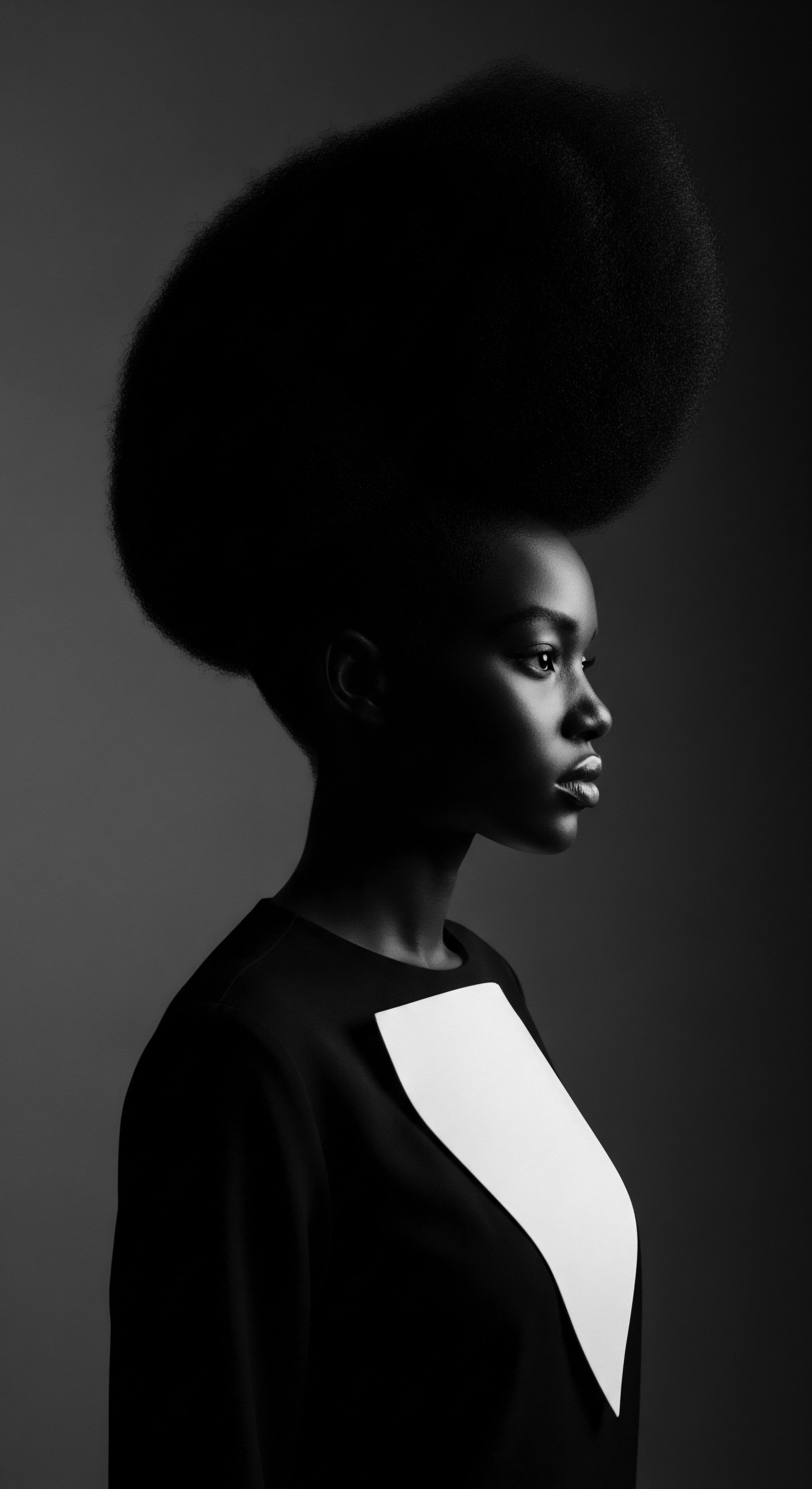
Reflection on the Heritage of Afro-Ethnic Hair
The journey through the intricate world of Afro-Ethnic Hair reveals a profound continuum, linking elemental biology to the deepest chambers of human identity and collective memory. Each coil, every curl, holds echoes of ancient lands, whispering stories of survival and unwavering spirit. This hair, far from a mere biological attribute, serves as a living, breathing testament to a vibrant, enduring heritage that transcends geographical boundaries and historical adversities.
From the careful tending of strands in ancestral villages, where hair dictated social standing and spiritual connection, to the silent acts of defiance on slave ships, and then to the loud declarations of pride in modern movements, Afro-Ethnic Hair has been a steadfast companion through time. Its resilient character mirrors the resilience of the people who wear it, carrying traditions forward, even when circumstances sought to erase them. This hair embodies a wisdom born of generations, a deep understanding of natural resources, communal care, and the unspoken language of beauty.
The legacy of Afro-Ethnic Hair calls upon us to recognize its intrinsic worth, appreciating the meticulous care traditions that have been passed down, adapted, and rediscovered. It invites us to honor the unique qualities woven into its very structure, understanding that scientific insights often affirm the intuitive wisdom of our forebears. This reverence allows for genuine well-being, both for the individual hair strand and for the spirit connected to it.
By embracing Afro-Ethnic Hair in its multifarious expressions, we uphold a profound cultural narrative and contribute to a future where authenticity and ancestral wisdom are celebrated as the truest forms of beauty. The unbound helix of Afro-Ethnic Hair continues its journey, a constant source of inspiration, self-discovery, and deep connection to a cherished past.
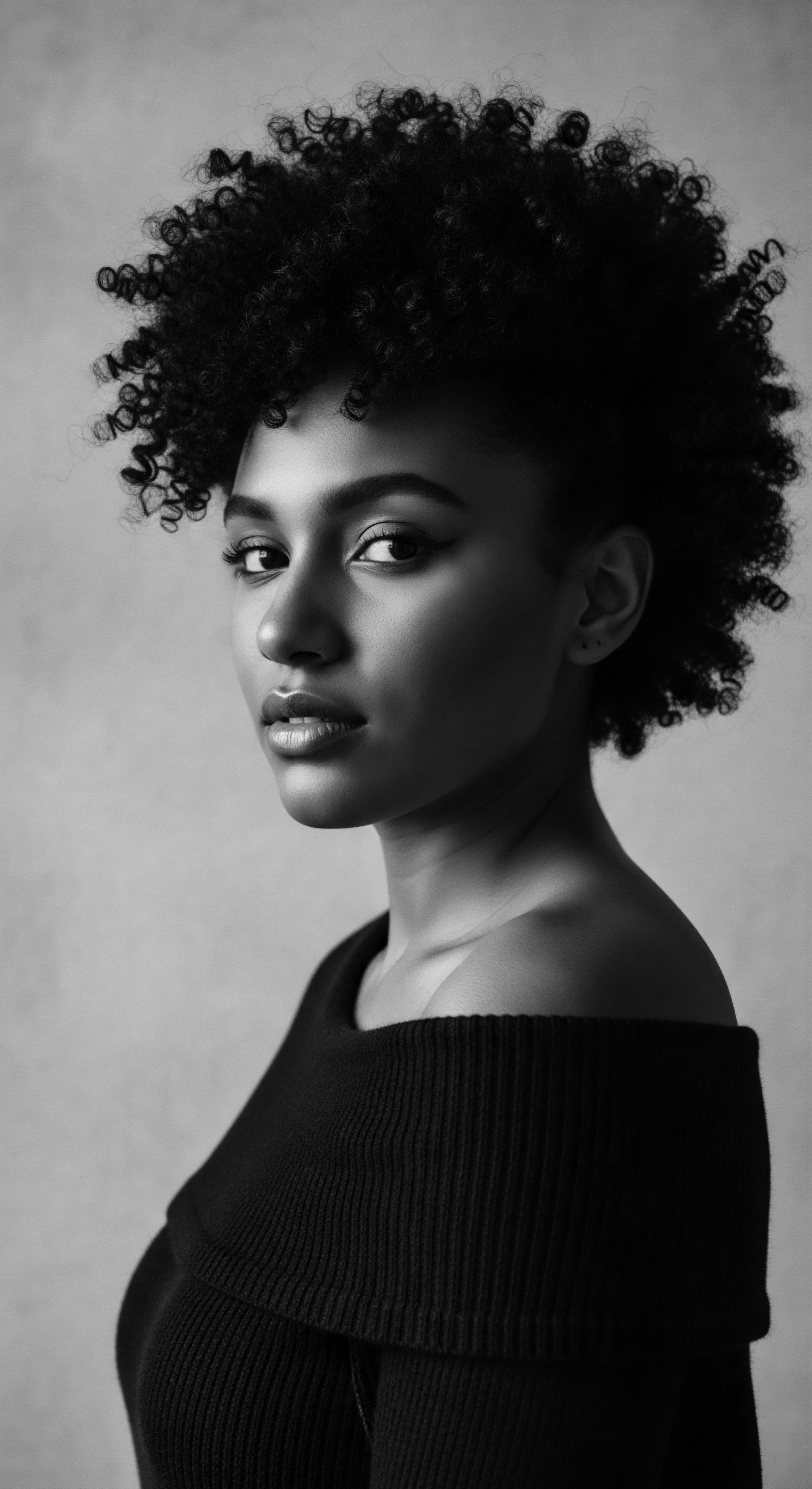
References
- Bankhead, K. & Johnson, L. (2014). Untangling the Roots ❉ A History of Black Hair. Black Publishers.
- Dabiri, E. (2020). Twisted ❉ The Tangled History of Black Hair Culture. Harper Perennial.
- Diouf, S. A. (1998). Servants of Allah ❉ African Muslims Enslaved in the Americas. New York University Press.
- Kittles, R. A. & Weiss, K. M. (2003). Race, Ancestry, and Genetics. Cambridge University Press.
- Nielson, C. E. (2019). Cultural Hair ❉ The Intersections of Race, Gender, and Beauty. University of California Press.
- Omotoso, S. A. (2018). Gender and Hair Politics ❉ An African Philosophical Analysis. Africology ❉ The Journal of Pan African Studies, 12(8), 5–19.
- Roosens, H. M. (1996). Hair in African Art and Culture. African Art Publications.
- Tharps, L. M. & Byrd, A. (2001). Hair Story ❉ Untangling the Roots of Black Hair in America. St. Martin’s Press.
- Thompson, C. (2009). Black women, beauty, and hair as a matter of being. Women’s Studies, 38, 831-856.
- Yates, L. A. (2017). Afro-Textured Hair ❉ A Clinical Guide. Springer.
